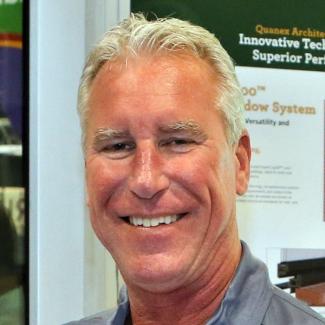Select the Right Spacer System for Your Business
Warm-edge spacers can be part of a system to achieve higher performance targets
Energy Star 7.0 standards will be in effect this fall, and window and door professionals continue to make preparations. Starting Oct. 23, residential windows, doors or skylights must meet Version 7.0 requirements to bear the Energy Star label.
It’s well established that the label has been an effective marketing tool for many manufacturers, as well as an effective way for consumers to distinguish which products can deliver the highest level of efficiency among their many options. But meeting 7.0 criteria will be far more challenging than meeting the present standards, and manufacturers must determine the best strategies for doing so.
One effective method for achieving new performance heights is to deploy flexible warm-edge spacer technology. As part of a strategic rethinking of your Energy Star line, nonmetallic, flexible warm-edge spacers may be an important weapon in your arsenal.
If you’re new to or only vaguely familiar with warm-edge spacer technology, there are a few important things to know about how they can contribute to your high-performing window systems:
Single Seal or Dual Seal?
Warm-edge spacers can come in different configurations. Flexible single-seal spacers, for example, are applied in a single step using heat and minimal compression, and all the key components are integrated into the spacer, including the desiccant, sealant, adhesive, etc. Flexible dual-seal spacers, meanwhile, include all the key components integrated into the spacer but require the use of a secondary sealant following the application of the spacer onto the glass. This additional seal, depending on the type, can help provide enhanced structural strength and/or enhanced moisture barrier properties for the unit.
Each option has its benefits, and neither is inherently better than the other. Single-seal options may be more optimal for high-volume production. Dual-seal technology, with the benefit of the secondary seal, may enable you to make stronger durability claims or may be more suited for challenging environments. High-performance options of either can offer comparable performance in terms of thermal efficiency. For maximum performance, be sure to select nonmetallic warm-edge spacers, which are far less thermally conductive.
Your spacer supplier should be able to guide you toward the choice that helps meet your business needs. What’s more, they should be able to provide support and troubleshooting as you get up and running with your new system.
Proven Performance
Not all warm-edge spacer technologies are created equal, and when you’re staking both your performance claims and your reputation on a new spacer system, it’s important to be certain you’re making the right choice. It can be beneficial to work with a supplier that has long-term experience delivering high-performance warm-edge spacer systems that have proven themselves in tough applications.
It’s worth keeping in mind that it’s not just Energy Star criteria that are driving the need for higher-performing windows and doors. Research from the National Fenestration Research Council recently found that two-thirds of buyers said they consider energy efficiency as the most important window performance factor, while retailers rank energy efficiency in the top three factors for homeowners buying windows. As manufacturers pursue the future, selecting high-performance technologies for all parts of your window systems will be increasingly critical.
